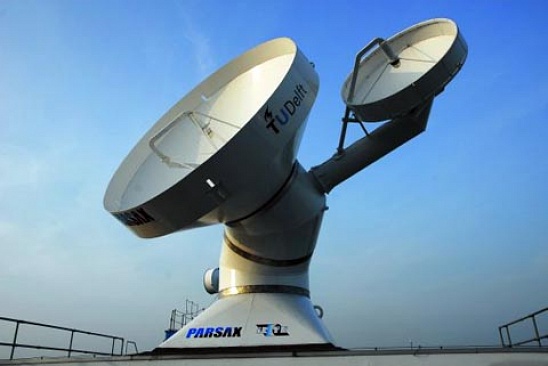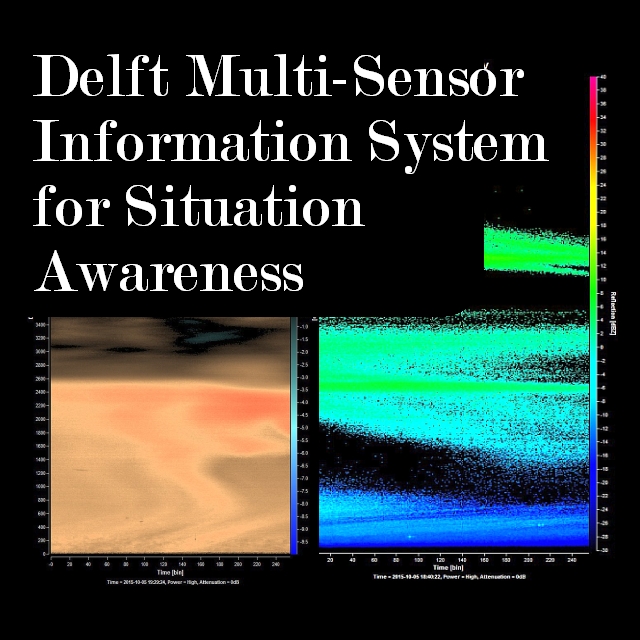PARSAX: S-band polarimetric Doppler radar
Modern demands for radar sensors require that they have to be not only detecting but multi-functional instruments. They have to detect, trace, classify and recognize targets, to estimate and retrieve their parameters. And all this tasks have to be solved in the framework of different missions and in variable scenarios, environment and weather conditions.
Such requirements can not be satisfied with traditional fixed radar architecture. Modern radars has to be highly reconfigurable. This is especially important for the research radars.
In TU Delft we created the PARSAX: highly reconfigurable research FMCW radar that is
- Full Polarimetric (2 independent highly linear polarimetric RF channels both in transmitter and receiver);
- High-Resolution (bandwidth up to 100 MHz - up to 1.5 m);
- High-Sensitive (the transmit power - up to +50 dBm per channel, the receivers' noise floor - around -93 dBm);
- Doppler (real-time FPGA-based digital receiver up to 5100 complex samples in coherent range profile for real-time GPU-based Doppler processing);
- Continuous Wave (range processing of sounding signals with BT-product up to 100.000 in real time );
- Software Defined Radar (digital generation of agile waveforms and their matched processing on Intermediate Frequency in 4 parallel channels, FPGA-based, fully programmable digital receiver);
- Modular (can be converted in X-band system using additional RF front-end).
Possible applications
The PARSAX is unique in the world polarimetric radar for simultaneous measurements of all backscattering matrix elements using sounding signals with dual orthogonality - in polarimetric and in time-frequency spaces that is used for
- Continuous or campaign-based collection of the polarimetric radar data for atmospheric, ground- and sea-based targets for use in remote sensing applications;
- Development and efficiency validation of the Doppler and/or polarimetric data processing algorithms (including MTI, multichannel polarimetric CFAR and target to clutter contrast improvement) for detection and identification of targets, their parameters estimation and retrieval, especially in cases of heavy clutter.
Software Defined Radar radar flexible architecture provides unique opportunity to study, develop and experimentally validate
- New types of wideband waveforms and their processing algorithms (PCM, FCM, OFDM, etc.): to study specific processing algorithms with high computational complexity the radar has a possibility for direct streaming of intermediate frequency (IF) sampled data to host computer for further processing and/or archiving;
- Wideband waveforms and processing algorithms for Moving/Migrating Targets Indication (MTI);
- Novel approaches, methods and algorithms for the radar waveforms management for different applications, missions and scenarios.
Technical Specification
Technical details about the PARSAX radar system
Applications and Observations
Examples of PARSAX radar observations for different applivations
Contact persons
dr. Oleg Krasnov
Scientific coordination
ing. Fred van der Zwan
Organization and technical coordination
* * *
Back
Back to the MS3 group RadarLab

